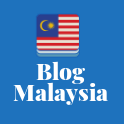Today’s diverse learners demand that education be delivered in a flexible mode to suit their learning needs. To meet these needs, higher education institutions (HEIs) are turning to information and communication technology (ICT) as an enabling factor to allow for greater flexibility and accessibility to learners, particularly working adults who have multiple commitments. ICT has the potential to provide choices, cater for learner diversity and stimulate and engage learners. In this regard, HEIs are spending huge sums of money on ICT hardware, software and Netware to ensure that learners are provided the best e-learning facilities possible. Despite the best of intentions and efforts and educators’ belief about the value of ICT, the issue of learners’ perceptions, skills and use of ICT in learning need to be investigated to ensure that HEIs’ technology expectations are met. Learners differ in their basic learning styles and individual preferences and this has a significant effect on their willingness to embrace ICT in their learning.
A majority of today’s learners are technology savvy but they are not necessarily information savvy. For example, they can text messages and download music but are often at a loss when selecting appropriate websites and creating persuasive digital presentations. To function in an information society, learners need ICT literacy. It includes ability to use technology as a tool to research, evaluate, organize and communicate information. Learners need good ICT literacy skills to succeed in their academic course, when they have to carry out (on their own) tasks such as checking their financial, administrative and academic status. They also need the skills to produce documents with word processors, to present project papers or short talks using a software application such as PowerPoint or through a personal website, to retrieve information from the digital library and Internet, to communicate electronically with staff and peers and to download and upload files. Upon their graduation, the skills have to be a part of them in order to compete in today’s technology-driven and information-rich work environment.
On average, Open University Malaysia (OUM) spends 15% of its annual budget (operating as well capital expenditure) on ICT-related departments, namely, ICT Services, Centre for Instructional Design and Technology (CIDT) and Digital or Online Library. These expenditures are intended to provide the highest quality ICT infrastructure to deliver its academic programmes effectively and efficiently. Being an open and distance learning (ODL) institution utilizing a blended mode of delivery, OUM relies heavily on the capability of its ICT infrastructure to effectively provide quality education to its learners at any time and in any place. An excellent ICT infrastructure will most likely enhance learners’ interest and motivation to use ICT in their learning.
This paper aims to create a substantial baseline of data about ICT skills, usage and attitudes of learners at OUM. This data and the instrument used were intended to provide a basis for benchmarking between HEIs and track changes over a period of time. This paper also seeks to determine the factors influencing the use of e-learning at Skills, Usage and Perception of ICT and ASEAN Journal of Open and Distance Learning
Their Impact on E-Learning in an ODL Institution OUM. An understanding of these factors will enable OUM to identify the necessary initiatives to enhance learners’ skills and use of ICT in learning.
Subscribe to:
Post Comments (Atom)

No comments:
Post a Comment